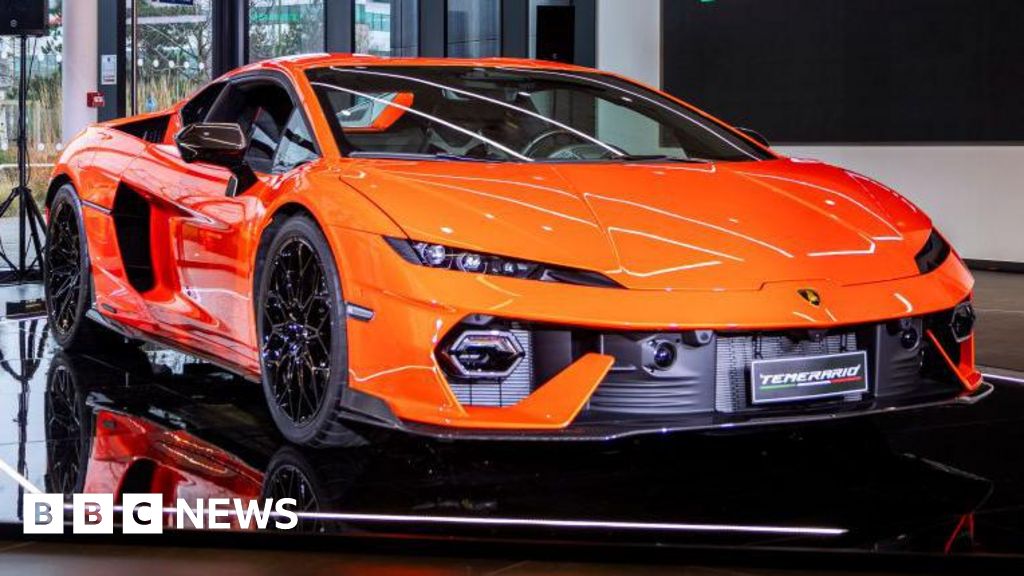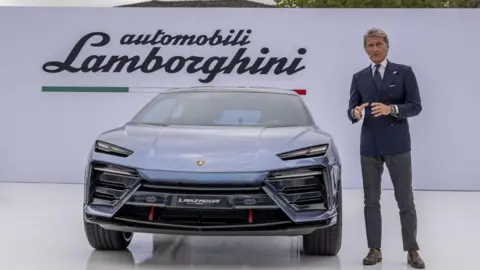Business
‘The tide went out’: How a string of bad loans has bank investors hunting for hidden risks

Big banks including JPMorgan Chase and Goldman Sachs had just finished taking victory laps after a blockbuster quarter when concerns emerged from an obscure corner of Wall Street, sending a collective shiver through global finance.
Regional bank Zions late Wednesday disclosed a near total wipeout on $60 million in loans after finding “apparent misrepresentations” from the borrowers. The next day, peer Western Alliance said that it had sued the same borrower, a commercial real estate firm called the Cantor Group, for alleged fraud.
The result was a sudden and deep selloff among regional banks, drawing comparisons to the churn of the 2023 banking crisis that consumed Silicon Valley Bank and First Republic. This time around, investors are focused on a specific type of lending made by banks to non-depository financial institutions, or NDFIs, as the source of possible contagion.
“When you see one cockroach, there are probably more,” JPMorgan CEO Jamie Dimon said this week. “Everyone should be forewarned on this one.”
Concerns over credit quality had been simmering for weeks after the September collapse of two U.S. auto-related companies. JPMorgan, the biggest U.S. bank by assets, this week reported a $170 million loss tied to one of them, the subprime auto lender Tricolor.
But it wasn’t until a third case of alleged fraud around loans made to NDFIs that investors were jolted into fearing the worst, according to Truist banking analyst Brian Foran.
“You now have had three situations where there was alleged fraud” involving NDFIs, Foran said.
Dimon’s comments “really resonated with people who were like, ‘Oh, man, the tide went out a little bit, and now we’re seeing who was lacking their swim trunks,” Foran said.

What are NDFIs?
The episode cast a spotlight on a fast-growing category of loans made by regional banks and global investment banks alike. Rules put into place after the 2008 financial crisis discouraged regulated banks from making many types of loans, from mortgages to subprime auto, leading to the rise of thousands of non-bank lenders.
Moving riskier activities outside of the regulated bank perimeter, where failures are backstopped by the Federal Deposit Insurance Corporation, seemed like a good move.
But it turns out, banks are a major source of funding for non-bank lenders: commercial loans to NDFIs reached $1.14 trillion as of March, per the Federal Reserve Bank of St. Louis.
Bank loans made to non-bank financial firms were the single fastest-growing category, rising 26% annually since 2012, according to the St. Louis Fed.
“The surge in NDFI lending was really because all these different regulations added up to say there are a bunch of loans banks can’t do anymore, but if they lend to someone else who does them, that’s OK,” Foran said.
“We really don’t know much about these NDFI books,” Foran said. “People are saying, ‘I didn’t know it was so easy for a bank to think they had $50 million in collateral and find out they had zero.'”
‘Overreaction’ or early?
Part of what’s spooking investors is that, while some of the loan losses disclosed by regional banks have been relatively small, they’ve been near total wipeouts, said KBW bank analyst Catherine Mealor.
“NDFI lending, because of the collateral involved, typically has a higher loss rate, and the losses can come very quickly and out of nowhere,” Mealor said. “It’s really hard to wrap your mind around these risks.”
Mealor said investors have been inundating her with questions around the level of NDFI exposures in her coverage universe, the analyst said. Firms including Western Alliance and Axos Financial are among those with the highest proportion of NDFI loans, according to an August research note from Janney Montgomery.
Still, regional banks are benefitting from an improving interest rate environment and rising mergers activity, which underpin valuations, Mealor said, adding she thinks this week’s stock selloff was an “overreaction.”
“You want to avoid companies that show up high in the screen for NDFI loans,” she said. “There are plenty of high-quality companies in the KRX that are trading at a massive discount.”
Business
Diwali 2025 bank holidays: Are banks closed for 3 days this weekend? See state-wise details – The Times of India

Diwali 2025 bank holidays: As the festive week of Diwali approaches, several states will see a string of bank holidays. However, banks will not remain closed nationwide for three consecutive days, with most closures being state-specific based on regional festivals.
Are banks closed for Dhanteras 2025 ?
This Saturday, October 18, banks across India will remain open, as it is the third Saturday of the month. No, banks will not be closed on Dhanteras, which also falls on October 18.
Regular banking services will continue nationwide, the only exception is Assam, where branches will stay closed in observance of the Kati Bihu festival.
Are banks closed on Diwali? Region-wise list
Monday, October 20: Banks will be closed in multiple states and union territories including Tripura, Gujarat, Mizoram, Karnataka, Madhya Pradesh, Chandigarh (UT), Tamil Nadu, Uttarakhand, Assam, Telangana, Arunachal Pradesh, Rajasthan, Uttar Pradesh, Kerala, Nagaland, West Bengal, Delhi (NCT), Goa, Chhattisgarh, Jharkhand, Meghalaya, Himachal Pradesh, and Andhra Pradesh for Diwali, Naraka Chaturdashi, and Kali Puja celebrations.Tuesday, October 21: Branches in Belapur, Bhopal, Bhubaneswar, Gangtok, Imphal, Jammu, Mumbai, Nagpur, Raipur, and Srinagar will remain shut for Diwali Amavasya, Deepawali, and Govardhan Puja.Wednesday, October 22: Banks in Gujarat, Maharashtra, Karnataka, Uttarakhand, Sikkim, Rajasthan, Uttar Pradesh, and Bihar will be closed for Balipadyami, Laxmi Puja (Diwali), and Vikram Samvat New Year Day.Thursday, October 23: In Gujarat, Sikkim, Manipur, Uttar Pradesh, West Bengal, and Himachal Pradesh, banks will remain closed for Bhaidooj, Chitragupt Jayanti, Laxmi Puja, Bhratridwitiya, and Ningol Chakkouba.
Upcoming state-wise bank holiday schedule:
October 27–28: Banks in Kolkata, Patna, and Ranchi will stay shut for Chhath Puja.Friday, October 31: In Ahmedabad, banks will remain closed to mark Sardar Vallabhbhai Patel’s birth anniversary.
What if your bank is closed?
Even on holidays, customers can continue using online banking, ATMs, mobile apps, and UPI platforms for fund transfers, bill payments, and other services.However, in-person services such as large cash deposits, demand drafts, and account settlements will not be available. It’s advisable to plan transactions in advance to avoid last-minute inconvenience during the festive week.
Business
GSTR-3B Due Date: CA Body Urges Govt To Extend October 20 Deadline Due To Diwali Holiday

Last Updated:
GSTR-3B Due Date Extension: BCAS says the days leading up to October 19, a Sunday and part of the main Diwali festivities, are typically observed as public holidays across India.

As per the existing schedule, the GSTR-3B filing deadline falls on October 20, 2025, which coincides with the Diwali holiday.
GSTR-3B Due Date Extension News: The Bombay Chartered Accountant Society (BCAS) has urged the finance ministry to extend the due date for filing GSTR-3B returns for September 2025, citing a clash between the statutory compliance deadline and the Diwali holiday.
As per the existing schedule, the GSTR-3B filing deadline falls on October 20, 2025, which coincides with the Diwali holiday. BCAS pointed out that the days leading up to October 19, a Sunday and part of the main Diwali festivities, are typically observed as public holidays across India. This overlap, the society noted, leaves little time for professionals, accountants, and company staff to complete crucial filing processes.
In its representation dated October 8, 2025, BCAS said the shortened compliance window could make it difficult for taxpayers to meet statutory obligations on time. The society highlighted that preparation of Form GSTR-3B involves detailed reconciliation, verification of Input Tax Credit (ITC), and fund arrangements for tax payments — all of which require active coordination among teams that are unavailable during the festive week.
“Therefore, as a significant step towards ease of doing business, it is earnestly requested that the due date for filing GSTR-3B of September 2025 be extended. Granting this essential administrative relief will enable registered persons and tax practitioners to complete the necessary compliance procedures following the conclusion of the festival period, ensuring accurate and complete return filing and promoting adherence to the provisions of the CGST Act without penalising taxpayers for unavoidable circumstances,” BCAS said in its submission.
The society added that the festival-related holidays would hinder access to staff, support services, and banking facilities needed for return finalisation. It also clarified that Nil GSTR-3B returns – permitted only when there are no outward or inward supplies or liabilities for a given period – would not apply to most regular taxpayers for September, reinforcing the need for an operational compliance window beyond the Diwali holidays.
BCAS concluded that a short-term extension of the filing deadline would ease administrative pressure, prevent inadvertent non-compliance, and support the government’s broader goal of improving the ease of doing business.
What Is The Late Fees For GSTR-3B?
Late filing of GSTR-3B attracts a statutory late fee under the Goods and Services Tax (GST) framework. As per current rules, taxpayers who miss the due date are liable to pay Rs 50 per day (Rs 25 each for CGST and SGST) until the return is filed. However, if there is no tax liability for the month (i.e., a Nil return), the late fee is reduced to Rs 20 per day (Rs 10 each for CGST and SGST).
The late fee is calculated from the day after the due date until the actual filing date, subject to a maximum cap of Rs 5,000. In addition to the late fee, interest at 18% per annum is also charged on the outstanding tax amount for the delay period.

Haris is Deputy News Editor (Business) at news18.com. He writes on various issues related to personal finance, markets, economy and companies. Having over a decade of experience in financial journalism, Haris h…Read More
Haris is Deputy News Editor (Business) at news18.com. He writes on various issues related to personal finance, markets, economy and companies. Having over a decade of experience in financial journalism, Haris h… Read More
October 18, 2025, 10:48 IST
Read More
Business
Lamborghini swerves away from all-electric future

Theo LeggettInternational Business Correspondent
 Getty
GettyThe boss of Lamborghini has said its customers still want “the sound and the emotion” of internal combustion engines, and the company will use them in its cars for at least the next decade.
Speaking to the BBC at the Italian supercar-maker’s London showroom, chief executive Stephan Winkelmann said enthusiasm for electric cars was declining – creating an opportunity to focus on hybrid power instead.
Lamborghini will decide in the next month whether a long-planned new model, the Lanzador, will be all-electric, or merely a plug-in hybrid, he said.
Mr Winkelmann insisted the business was socially responsible, but added that as a low-volume manufacturer, its actions would have a limited impact on the environment.
Lamborghini is a luxury brand ultimately owned by the Volkswagen Group. It currently has three main models.
The Temerario and Revuelto are supercars. Both are plug-in hybrids, combining powerful petrol engines with electric motors. They can run in all-electric mode, but only for very short distances.
The Urus is a luxury SUV, currently available as a plug-in hybrid and as a conventional petrol-powered car. Less exotic and certainly less ostentatious than the supercars, it nevertheless makes up more than half of the company’s sales.
There is also a limited edition ‘super-sports’ car: the Fenomeno, which has a top speed of more than 215mph. Only 30 will be built, each costing at least €3m (£2.6m) before taxes.
Two years ago, Lamborghini announced plans for an all-electric successor to the Urus, which would have been available from 2029. However, the plan was recently shelved, with the electric model now not expected before 2035.
It had also planned to make a brand new battery-powered grand tourer (GT), to be called the Lanzador. However, the future of that project is also deeply uncertain.

“We still need to decide whether we are going full electric, the decision we took some years ago, or seeing whether in the new environment this should also be a plug-in hybrid”, said Mr Winkelmann.
The new environment he referred to is a perceived waning of interest in electric cars among high-end buyers.
“Today enthusiasm for electric cars is going down”, he explained. “We see a huge opportunity to stay with internal combustion engines and a battery system much longer than expected”.
Continuing to use internal combustion engines for another 10 years, he said, would be “paramount for the success of the company”. Customers, he insisted, still hankered after the noise and fury of a conventional motor.
“This is something they want, they still want the sound and the emotion of an internal combustion engine”, he said.
It’s an approach that contrasts with that of Lamborghini’s Italian arch-rival Ferrari, which is pushing ahead with its own plans for a first all-electric car.
The aptly-named Elettrica is due to be unveiled next year, though the company showed off some key components at its Capital Markets Day earlier this month.
It will be sold alongside conventional and hybrid models.
Ferrari chief executive Benedetto Vigna said it would have driving traits that were “unique in the heart, in the soul of our clients.”
 Getty Images
Getty ImagesMr Winkelmann insisted his own company was not ignoring the ongoing pressure to cut emissions.
“We are selling 10,000 cars in a world that is producing 80 million cars a year, so our impact in terms of CO2 emissions is not that important”, he said.
“For sure, we are socially responsible, but it doesn’t really make a lot of difference”.
The sale of new petrol and diesel cars, including plug-in hybrids, is due to be banned in both the the EU and the UK from 2035.
However, in the EU, there has been intense lobbying from some manufacturers for the transition to electric cars to be given more time, in order to “acknowledge current industrial and geopolitical realities”.
If that happens, internal combustion engines could remain on the market beyond the current deadline.
Meanwhile the UK’s rules provide an exemption for “low volume” manufacturers who register fewer than 2,500 new cars each year.
This would currently cover Lamborghini, which sold just 795 cars here last year.
-

 Tech1 week ago
Tech1 week agoApple Took Down ICE-Tracking Apps. Their Developers Aren’t Giving Up
-

 Sports1 week ago
Sports1 week agoKamala Harris hosts WNBA player to discuss alleged conversation with league commissioner
-

 Tech1 week ago
Tech1 week agoMen Are Betting on WNBA Players’ Menstrual Cycles
-

 Business1 week ago
Business1 week agoConsumer caution ahead of Budget drives drop in footfall – BRC
-

 Business1 week ago
Business1 week ago‘Need very badly’: Donald Trump announces Arctic cutters deal with Finland; US to buy 11 Icebreakers – The Times of India
-

 Tech1 week ago
Tech1 week agoSize doesn’t matter: Just a small number of malicious files can corrupt LLMs of any size
-

 Entertainment1 week ago
Entertainment1 week agoPrince Albert of Monaco leads the Monaco Explorations in the Aegean Sea
-

 Business1 week ago
Business1 week agoDelta says premium travel is set to overtake coach cabin sales next year













